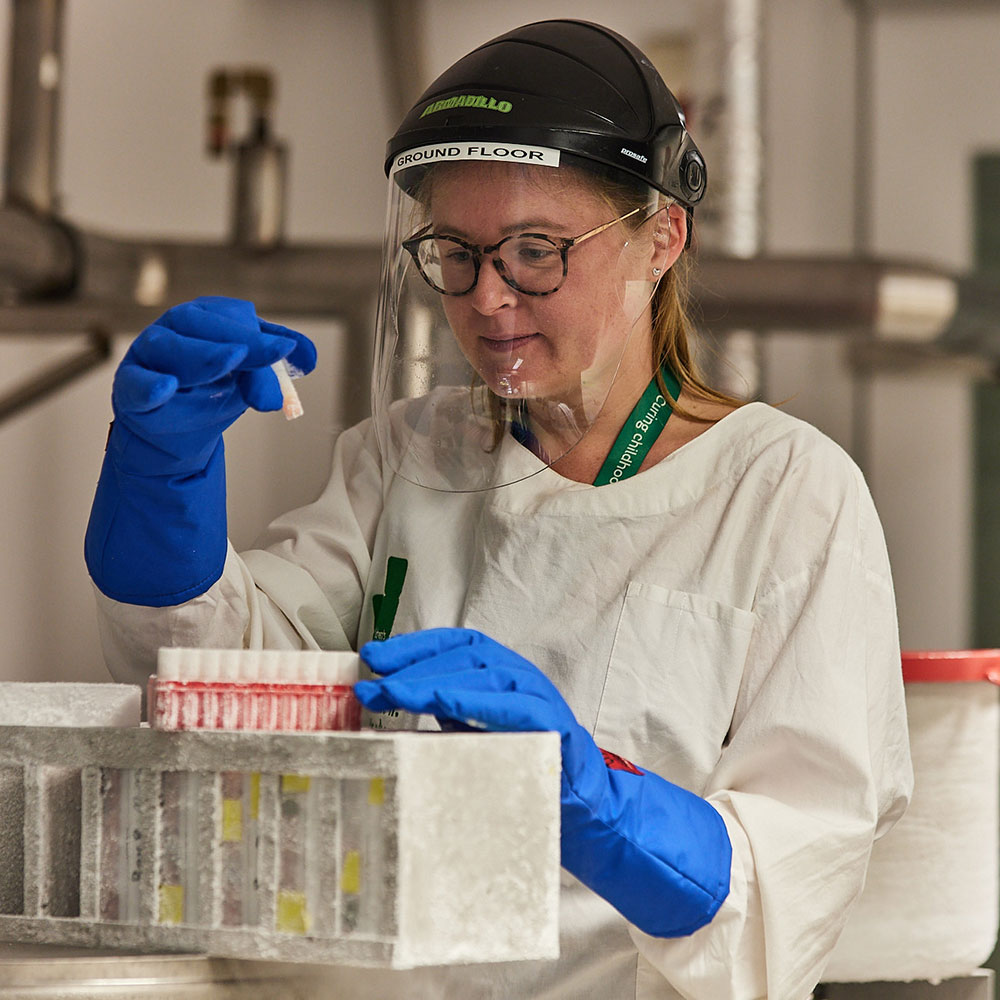Anya’s Wish is a new research project established at Children’s Cancer Institute in memory of Anya Zuber, a vivacious and inspiring 19-year-old who passed away from osteosarcoma in 2020.
Osteosarcoma is a bone cancer – a malignant tumour that grows in the bones of the body. It usually starts in bones that are growing quickly, often in the arms and legs.
It is teenagers and young adults that are hit the hardest by osteosarcoma, particularly during the growth spurt. In young Australians aged 15-24 years, bone cancer causes more deaths than any other cancer, except leukaemia.
Those with disease that has metastasised (spread) or relapsed (come back after treatment) face the worst prognosis, with only about one in five surviving.

We need better, safer treatments
Today’s treatments for osteosarcoma are, by and large, the same treatments that have been used for decades. The main options are surgery, often amputation, high-dose chemotherapy and radiation therapy. While in many cases these treatments save a child’s life, they often cause a lot of damage in the process. The harsh reality for a child treated for osteosarcoma is that they may have to deal with serious side effects that go on for years, if not the rest of their lives.
Anya’s story
Anya was 13 when she was diagnosed with high-grade metastatic osteosarcoma – an aggressive and life-threatening bone cancer. Her family moved from Armidale to Sydney, and Anya began treatment. After surgery and chemotherapy, she got the ‘all clear’ and was able to return home.
But only a few weeks later, Anya noticed bruising and a lump on her leg − the cancer had returned. She endured another six months of intensive chemotherapy and high-dose radiation, before again receiving the ‘all clear’. For the next few years, she was finally able to enjoy teenage life.

Devastatingly, a scan in May 2020 showed a reoccurrence of the cancer in her lungs. Despite seemingly successful surgery in July, Anya experienced more symptoms in August. On 12 September 2020, surrounded by her loved ones, Anya lost her very brave battle. She was just 19.
An ambitious new research project
Towards the end of her short life, Anya wished that her body, her experience with the disease, and any other resources be focused on the ongoing research to end childhood cancer, and particularly sarcomas.
That’s why in her memory, a new research project named Anya’s Wish has been established at Children’s Cancer Institute to find more effective and safer treatments for osteosarcoma.
We are learning more about childhood cancer every day. In particular, the tumour analysis we are doing through the Zero Childhood Cancer Program is providing us with valuable new information about high-risk cancers like osteosarcoma.
Through Anya’s Wish, we want to take these learnings and apply them to the development of new treatments. We want to find new-generation drugs that kill osteosarcoma cells and stop tumour growth. We also want to find drugs that are even more effective in combination. This will help overcome the problem of treatment resistance, which often results when only one drug is used.
Better treatments will not only mean more children survive, but also that survivors have a higher quality of life. We intend to develop a unique program aimed to find the best treatment strategy for osteosarcoma, centred around novel targeted therapies – drugs that specifically target tumour cells and leave healthy cells unharmed. This will help avoid unwanted side effects, a major problem with today’s treatments.
Senior Scientist Dr Emmy Fleuren will lead Anya’s Wish. Originally from the Netherlands, Emmy moved to Australia from the UK to join Children’s Cancer Institute in 2019, to lead research into identifying novel therapeutic targets in sarcoma.
“I know that Anya was dedicated to supporting research to find better treatments for children with osteosarcoma. There is an absolute and unmet need to do something about these tumours and with Anya’s Wish we can do just that.”
Anya’s Wish is only made possible thanks to the incredible support of the community. Thank you to all those who have already supported this research. If you’d like to make a donation please click here.














